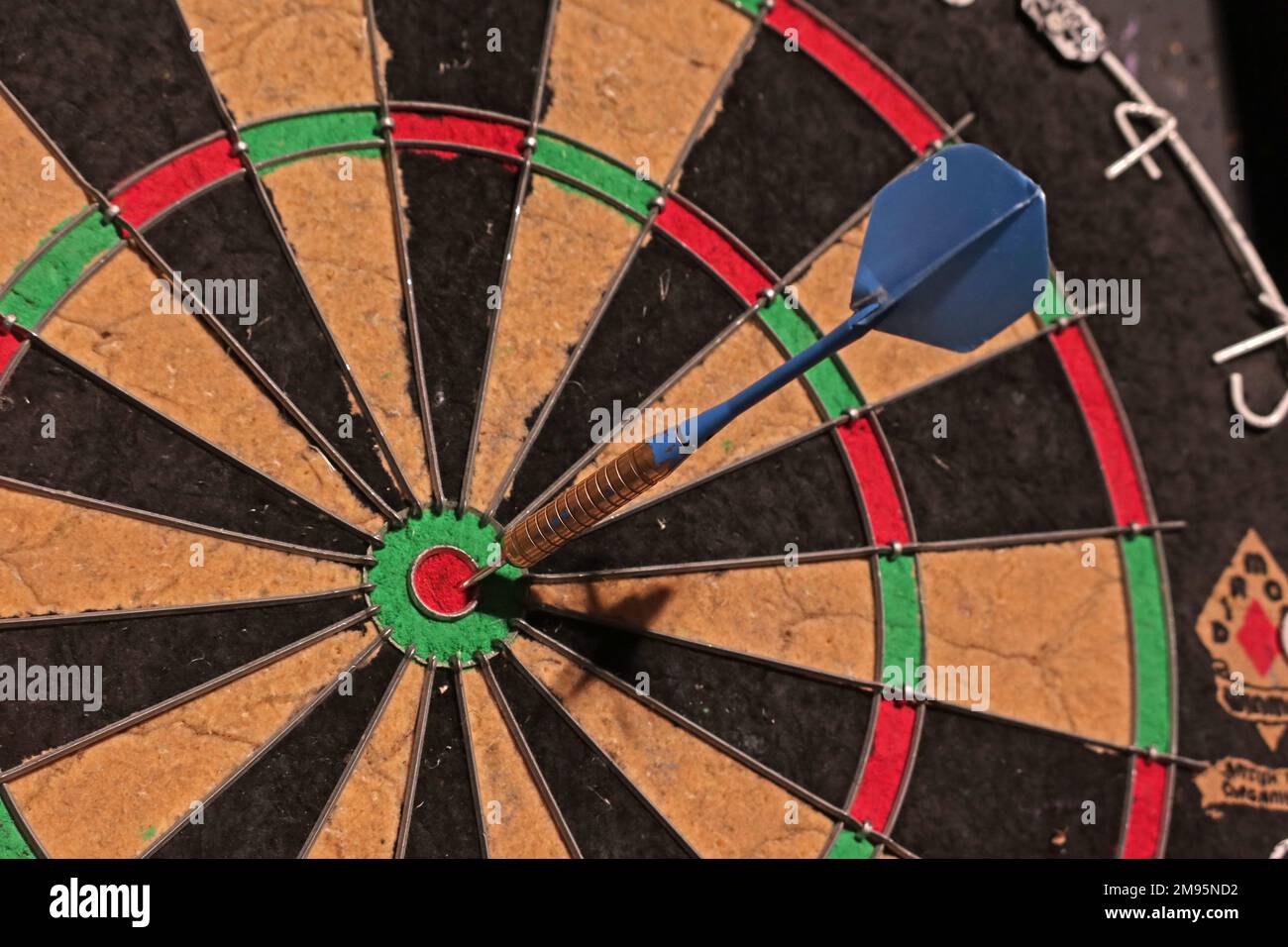Winmau Diamond Pub dartboard, blue dart scores 50 in the bullseye

Image details
Contributor:
Tony Smith / Alamy Stock PhotoImage ID:
2M95ND2File size:
57.1 MB (1.7 MB Compressed download)Releases:
Model - no | Property - noDo I need a release?Dimensions:
5472 x 3648 px | 46.3 x 30.9 cm | 18.2 x 12.2 inches | 300dpiDate taken:
15 January 2023Location:
England, United KingdomMore information:
Darts or dart-throwing is a competitive sport in which two or more players bare-handedly throw small sharp-pointed missiles known as darts at a round target known as a dartboard The standard numbered point system is attributed to Lancashire carpenter Brian Gamlin, who devised it in 1896 to penalise inaccuracy, though this is disputed. Many configurations have been used, varying by time and location. In particular, the Yorkshire and Manchester Log End boards differ from the standard board in that they have no triple, only double and bullseye. The Manchester board is smaller than the standard, with a playing area of only 25 cm (9.8 in) across, with double and bull areas measuring just 4 mm (0.16 in). The London Fives board is another variation, with only 12 equal segments, with the doubles and trebles being a quarter of an inch (6.35 mm) wide. Mathematically, removing the rotational symmetry by placing the "20" at the top, there are 19!, or 121, 645, 100, 408, 832, 000 possible dartboards. Many different layouts would penalise a player more than the current setup; however, the current setup actually does the job rather efficiently. There have been several mathematical papers published that consider the "optimal" dartboard. Before World War I, pubs in the United Kingdom had dartboards made from solid blocks of wood, usually elm. But darts pocked the surface of elm such that it was common for a hole to develop around the treble twenty. The other problem was that elm wood needed periodic soaking to keep the wood soft. In 1935, chemist Ted Leggatt and pub owner Frank Dabbs began using the century plant, a type of agave, to make dartboards. Small bundles of sisal fibres of the same length were bundled together. The bundles were then compressed into a disk and bound with a metal ring. This new dartboard was an instant success. It was more durable and required little maintenance. Furthermore, darts did little or no damage to the board; they simply parted the packed fibres whe